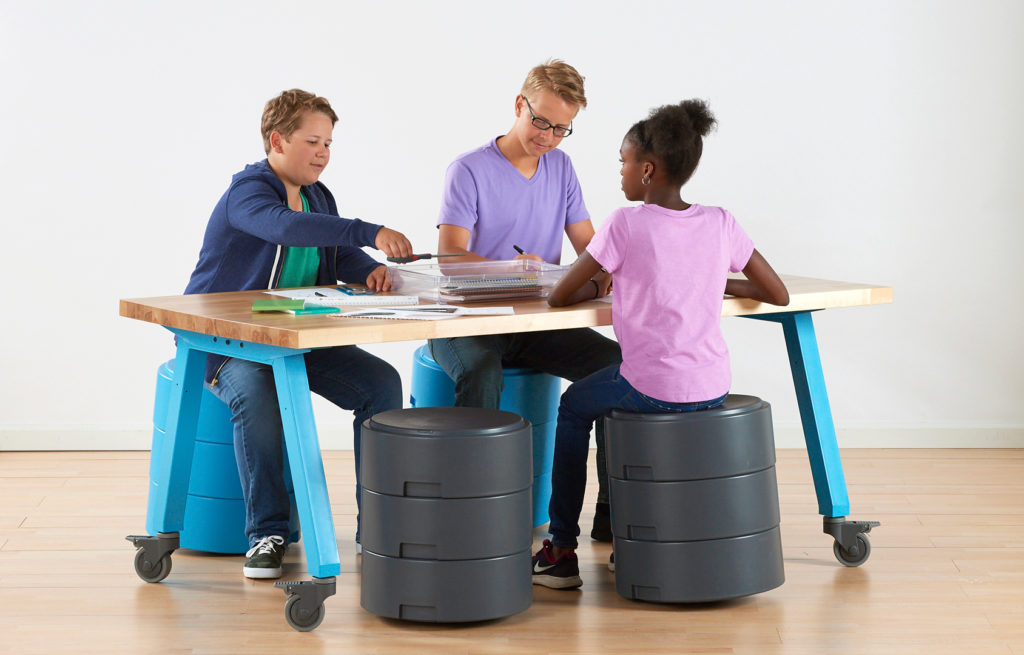Benefits of Flexible Seating
At [Your Company Name], we understand the importance of creating an engaging and comfortable learning environment. That’s why we are here to discuss the numerous benefits of flexible seating in educational settings. Flexible seating refers to a classroom arrangement that allows students to choose where and how they sit, promoting a more dynamic and student-centered learning experience.
Enhanced Engagement
One of the key advantages of flexible seating is the enhanced engagement it fosters among students. By providing them with the freedom to choose their seating arrangement, students feel a sense of ownership and control over their learning environment. This autonomy can lead to increased motivation, focus, and participation in class activities.
Improved Collaboration
Flexible seating arrangements also encourage collaboration and teamwork among students. Traditional classroom setups with rows of desks often hinder communication and interaction. On the other hand, flexible seating allows students to easily form groups, work together on projects, and exchange ideas. This collaborative environment promotes effective communication skills and fosters a sense of community within the classroom.
Increased Comfort
Comfort plays a significant role in students’ ability to concentrate and learn effectively. Fixed seating arrangements may not cater to the diverse needs and preferences of students. In contrast, flexible seating provides a variety of options such as bean bags, standing desks, cushions, and floor mats. This allows students to select a seating option that suits their individual comfort levels, promoting a more relaxed and conducive learning environment.
Improved Posture and Health
Traditional desks and chairs often force students into static and uncomfortable positions for extended periods. Flexible seating, on the other hand, encourages students to adopt more ergonomic and active postures. Options like stability balls and wobble stools promote core strength and balance, which can improve students’ posture and overall physical health. By incorporating movement into the learning process, flexible seating can also help reduce sedentary behavior and increase focus.
Enhanced Creativity and Critical Thinking
Flexible seating arrangements have been shown to stimulate creativity and critical thinking skills among students. When students have the freedom to choose their seating, they are more likely to feel empowered and take ownership of their learning. This sense of autonomy can lead to increased creativity, as students feel more comfortable expressing their ideas and experimenting with different approaches to problem-solving.

In conclusion, the benefits of flexible seating in educational settings are numerous and impactful. By providing students with the freedom to choose their seating arrangements, we can enhance engagement, promote collaboration, increase comfort, improve posture and health, and stimulate creativity and critical thinking. At [Your Company Name], we believe that creating a student-centered learning environment is crucial for fostering academic success and personal growth. Incorporating flexible seating into classrooms is a step towards achieving this goal.
Frequently Asked Questions about the Benefits of Flexible Seating
1. What is flexible seating?
Flexible seating refers to a classroom arrangement that allows students to choose where and how they sit, providing them with a variety of seating options such as bean bags, floor cushions, standing desks, and wobble stools.
2. What are the benefits of flexible seating?
Flexible seating offers several benefits, including improved student engagement, increased collaboration, better focus and attention, enhanced comfort, and the promotion of a more inclusive and student-centered learning environment.
3. How does flexible seating improve student engagement?
Flexible seating allows students to select a seating option that suits their individual preferences and needs, making them more comfortable and engaged in the learning process. When students are comfortable, they are more likely to actively participate and contribute to class discussions and activities.
4. Does flexible seating promote collaboration?
Yes, flexible seating encourages collaboration among students. By providing a variety of seating options, students can easily form groups, work together, and share ideas. It fosters a sense of community and cooperation, leading to improved teamwork skills.
5. How does flexible seating help with focus and attention?
Flexible seating allows students to find a seating arrangement that helps them concentrate better. Some students may prefer sitting on a stability ball or using a standing desk, which can improve their focus and attention span during lessons.
6. How does flexible seating enhance comfort?
Flexible seating options provide students with the ability to choose a seating arrangement that suits their comfort preferences. This can include sitting on cushions, bean bags, or even on the floor. Increased comfort can lead to reduced distractions and better overall well-being.
7. Does flexible seating create a more inclusive learning environment?
Yes, flexible seating promotes inclusivity by accommodating different learning styles and physical needs. It allows students with sensory sensitivities or physical disabilities to find a comfortable seating option that supports their learning experience.
8. Are there any academic benefits associated with flexible seating?
Research suggests that flexible seating can positively impact academic performance. When students are more engaged, focused, and comfortable, they are more likely to absorb information, participate actively, and perform better academically.
9. Can flexible seating be implemented in all grade levels?
Yes, flexible seating can be adapted to suit different grade levels. While the specific seating options may vary, the underlying principles of providing choice and comfort can benefit students of all ages, from kindergarten to high school.
10. How can teachers effectively implement flexible seating in their classrooms?
To effectively implement flexible seating, teachers should involve students in the decision-making process, establish clear expectations for behavior and seat selection, provide a variety of seating options, and regularly assess and adjust the seating arrangements based on student feedback and needs.




